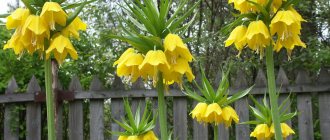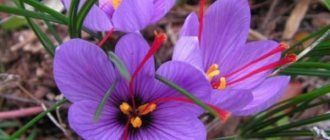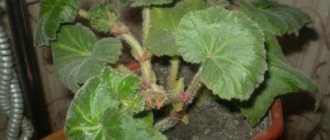About growing cineraria seaside (silver) from seeds, when to plant at home, a must-know for true connoisseurs of ornamental perennials. Planting and care you need to produce according to certain rules, then the plant will delight you with its beauty.
Cineraria seaside or silver is an ornamental foliage plant, which is also called seaside ragwort.
Important! It should not be confused with hybrid cineraria or bloody and graceful, these are different plants.
In the places where it grows it is a perennial, but in Russia it is grown as an annual. The bush grows to a height of about 30 cm and is distinguished by beautiful carved leaves of a silvery hue. Cineraria is used to decorate flower beds, borders, borders, etc.
Most often, cineraria maritima (silver) is grown from seeds. Next, we will tell you in detail how and when to plant cineraria seeds for seedlings at home .
Description
Cineraria belongs to the Astrov family, so it is necessary to sow and care for seedlings according to the same algorithm as other representatives of this group. Cineraria is translated from Latin as “ashy”.
The silvery (Seaside) type of plant is represented by a small herbaceous bush that grows no more than 50 cm in height.
Cineraria maritima is very popular in landscape design due to its velvety carved leaves. The plant is propagated in the fall by cuttings or by sowing seeds in the spring.
Silver cineraria is valued for its beautiful silver-colored leaves. It is often used to decorate borders when landscaping an area. Its flowers are not very beautiful, so they are only needed to produce seeds.
Varieties
Among the available varieties of ragwort, it is worth highlighting the most popular ones.
"Silver will give"
Decorative crop, with a pronounced lacy appearance of leaves. Silver Dust are small bushes with dense pubescence that become more attractive as they grow. The green mass of the variety is carved, the culture will be velvety to the touch, and the color will be silver. The plant is very often used by amateur gardeners and landscape designers.
Most often, the culture can be found in border compositions, in flower beds when grown together with other garden flowers.
Cineraria bloody
A variety of universal type that requires special care, since the shrub goes through a rather long growing season. The decorative appeal of the plant is emphasized by small snow-white inflorescences with a red border. Planting of the crop is usually carried out in winter or early spring.
"Stelata"
A hybrid variety of ragwort. Cineraria bloody was used as the mother culture of this plant. Among the expressive differences of the new bush, it is worth highlighting a different color of the inflorescences - an indigo shade. On average, the shrub is capable of growing in height up to 70 centimeters, while the crop creates an attractive carpet of large leaves on the ground.
"Nana"
This shrub attracts gardeners due to the presence of beautiful inflorescences that look like chamomile. In addition, the decorative appeal is complemented by the color of the flowers, which are distinguished by a burgundy center and deep pink petals.
Timing for planting silver cineraria seedlings
It is best to plant the crop in March and April. However, depending on the region, the sowing time will also vary:
- In the middle zone (Moscow region) – March 15-30.
- In Siberia and the Leningrad region, as well as in the Urals - in early - mid-April.
- In the southern regions - in early March.
You can also refer to the lunar calendar. In 2022, it is recommended to sow cineraria:
- March - 12-17, 19, 20.
- April - 6-8, 11-13, 15-17.
Unfavorable days for planting:
- March - 6, 7, 21.
- April—5, 19.
Diseases and pests
The plant is immune to many diseases. However, prolonged drought or waterlogging of the soil can lead to decreased resistance to various types of rot, powdery mildew and rust . If signs of disease are detected on the above-ground part of the crop, it is necessary to treat the cineraria with fungicides, and also adjust the watering regime.
Growing from seeds
All gardeners are capable of growing cineraria.
How to properly plant seaside cineraria for seedlings
Sowing silver cineraria seeds for seedlings at home should be carried out using a certain technology in several stages, which consist of preparing the seeds, containers and soil, as well as the sowing itself.
Seed preparation
Seeds of seaside cineraria do not need to be specially prepared for sowing for seedlings.
But it is recommended to keep them for 12 hours in a solution of a growth stimulator (Zircon, Epin-Extra) to improve the germination of the seed.
Priming
It is best to use loose, light, fertile soil for seedlings. You can also take universal soil for seedlings. If it is very dense, you need to add sand, vermiculite or perlite to loosen it.
Advice! The soil must be sifted to remove debris, stones and other large inclusions. To do this, take a sieve with large holes!
You can prepare your own soil mixture:
- 2 parts of turf land;
- 1 part peat;
- 1 part sand.
Important! Before sowing, any soil is disinfected by calcining it in the oven or spilling it with a solution of potassium permanganate.
Capacities
It is best to choose a wide bowl, 8-10 cm high: a seedling box, a food container, etc. You can also take cups or cassettes for seedlings. But it’s most convenient to plant them in a common box and then pick them.
Important! There should be drainage holes in the bottom of the container to drain excess moisture.
Sowing
Step-by-step instructions with photos:
- A 1.5-2 cm drainage layer of expanded clay, perlite or broken brick is placed at the bottom of the container.
- Next, fill the entire container with soil, leaving 2-3 cm from the edges.
- The earth is moistened.
- Sow the seeds on top of the soil using a wooden toothpick, as the seeds germinate in the light. It is moistened in water and brought to the seeds, carefully picking up 1 seed. Touch the end of the toothpick to the surface of the ground so that the seed remains on the ground.
Interesting! Some gardeners bury the seeds, but it is better not to cover them with soil.
- Seeds can be sown by hand, scattering them evenly over the surface at intervals of 2 cm.
- The plantings are watered with warm water from a spray bottle.
- The container is covered with film to create a greenhouse effect.
- The seedlings are signed so as not to be confused with others.
Reproduction
Rules for caring for bloody cineraria
The plant is propagated by seeds, cuttings, and dividing the bush.
All types of cineraria can be grown from seeds. By other methods, only decorative foliage plants are propagated.
Cuttings
In the summer, shoots 10 cm long are cut from the plant you like. Then they are placed in a glass or jar of water. The liquid level should be less than half the height of the cuttings so that the plants do not rot. After the young roots appear, the cuttings are planted in the ground.
Rooting can be done directly in the ground. To do this, the chopped shoots are slightly dried and planted in containers with a damp substrate. Drainage is first placed at the bottom. For rooting, you can use either purchased soil or a self-prepared mixture of sand and non-acidic peat. For disinfection, the surface is watered with a solution of potassium permanganate. The box with cuttings is carefully covered with a transparent plastic bag and placed in a warm place with dim light. To prevent the plants from getting too steamy, they are periodically ventilated. After 2–3 weeks, the shoots should take root.
Dividing the bush
The procedure is carried out before flowering begins. The overgrown bush is removed from the ground and carefully divided so that each part remains with roots and an above-ground shoot.
How to care for cineraria seedlings
Caring for silver cineraria seedlings at home is not difficult. It is necessary to maintain optimal conditions, then you will be able to grow strong, healthy and strong seedlings:
- The temperature before emergence should be + 20-25 degrees, after - + 18-20 degrees.
- The containers are placed immediately in a bright place, and after germination - on the sunniest windowsill. If necessary, seedlings are illuminated so that they receive 12 hours of daylight per day.
- The film is removed daily for ventilation in the morning and evening for 10 minutes. Wipe off condensation from the film to avoid waterlogging. After seed germination, gradually remove the covering material over 3-4 days.
- The soil should not be allowed to dry out or become waterlogged, otherwise fungal diseases will appear or the roots will rot. It is necessary to provide moderate moisture.
Watch the video! Cineraria seedlings. Features of cultivation
Advice! If the air in the room is dry, it is recommended to use a humidifier or place a container of water near the seedlings.
Picking rules and terms
Seedlings are planted when 2 well-developed leaves appear. To do this, use the same soil as when sowing seeds. It is poured into plastic cassettes, cups, peat pots with a volume of 250 ml or more.
Picking rules:
- The soil with seedlings is moistened.
- Using a spoon, dig up a seedling with soil.
- Planted in a hole in a new container up to the cotyledon leaves.
- Watered.
After picking:
- The room temperature is reduced to 18 degrees during the day and to 16 degrees at night. This is necessary to stimulate growth.
- The seedlings are shaded for the first 2-3 days.
How to feed seedlings
In order for the seedlings to be strong and healthy, they must be fertilized with a complex mineral or organic fertilizer for seedlings. The first time is fertilized 10 days after picking, and again 2 weeks before planting in open ground.
For fertilizer use any complex fertilizer for flower crops that can be diluted in water.
You can also treat seedlings with growth stimulants Epin, Zircon and others.
Organic matter is used several times a season:
- Mullein - 1 kg.
- Water – 10 l.
- Leave for 2-3 days.
- Dilute 10 times with water.
- Water at the root.
When stretching seedlings due to lack of light, they are sprayed or watered with a solution of Atlet to strengthen the stems and form harmonious growth.
Rules for caring for playone orchids at home
Small vegetative shoots and rather large flowers make these plants look like spring crocuses or autumn crocuses. Sometimes they are called “Indian crocuses”.
Species of this genus always shed their leaves in October, their roots and the old maternal pseudobulb die off. In this way they prepare for a period of winter dormancy, which they experience as leafless pseudobulbs with several renewal buds at the base of the pseudobulb and several dormant buds near its apex.
The development of 1-2-flowered inflorescences is ahead of the development of shoots, which remain underdeveloped during the entire flowering period. Compared to the shoot, the flowers are disproportionately large, single, 6-12 cm in diameter.
The flowers come in a variety of shades from whitish-pink and yellow to lilac-red and purple. The three-lobed lip bears several longitudinal ridges. The flowers remain fresh for two weeks. The most decorative effect is achieved by planting several pseudobulbs at once in a wide bowl.
Pleione blooming in spring can be kept on cool window sills, in winter gardens, cold greenhouses, and in warm climates where the snow melts in March - even in open ground, covering the plants well for the winter.
Pleiones are light-loving, require maximum illumination during intensive growth, then next year they will produce not one, but 2 peduncles. At the same time, leaves grown in insufficient light may get burned when the plant is moved from the shade to direct sunlight.
The substrate for potted playone at home should be loose, breathable, but at the same time quite fertile. As a substrate, you can use a mixture of turf soil, leaf humus, lowland peat, red high-moor peat, sand in a ratio of 1:1:1:1:2, you can add a portion of weathered dry manure.
An even lighter substrate is made up of fine pine bark, sphagnum moss and coarse perlite in a ratio of 2:3:1. During active growth in the spring-summer period, playones respond well to weekly feeding with balanced liquid mineral fertilizers at a concentration of 0.2%.
According to the rules of care, for successful flowering, most species require a period of biological dormancy (cessation of watering and cold keeping at a temperature of 0-4 ° C from November to February).
During dormancy, the pseudobulbs of spring-flowering playones that have shed their leaves are dug out of the pots, the daughter pseudobulbs are separated from the dying mother pseudobulbs, all old dead roots are cut off, leaving only their bases no more than 2-3 cm long. When planting, this brush of dead roots helps strengthen the pseudobulbs in the substrate. Then the pseudobulbs prepared for wintering are placed in sterile jars or plastic bags and placed in the refrigerator (preferably not on the door, but in the section for vegetables).
At the end of January or beginning of February, the plants are removed from the refrigerator and planting begins. Several well-ripened pseudobulbs are planted in one pot at once. Plants bloom before the leaves unfold and the pseudobulbs thicken, since all the necessary flower organs were formed in the bud in advance, during the dormant period.
Watering is resumed only after the roots of young shoots begin to grow. Water the plants abundantly, completely soaking the substrate lump.
Since the rotten root system of playone is not capable of recovery due to the development of lateral roots, they should not be allowed to rot from too early or excessive watering.
Pleione is propagated using “babies” formed on the tops of old pseudobulbs, which are separated and planted separately. This year they will produce only vegetative shoots that are not capable of flowering, but with good care next year the young daughter shoots developing from them can bloom.
When to plant open ground
Cineraria seedlings are transplanted into open ground from May 15, when the risk of return frosts has passed and the soil has warmed up well. 14 days before the procedure, the seedlings begin to harden.
Every day the seedlings are taken out onto the balcony or street without drafts and wind, and also protected from sunlight. Gradually, the stay time is increased to a day.
Growing cineraria from seeds at home through seedlings cannot be called a complicated process. Compact silver shrubs, grown independently, will decorate any area.
Watch the video! Cineraria: cultivation and care











